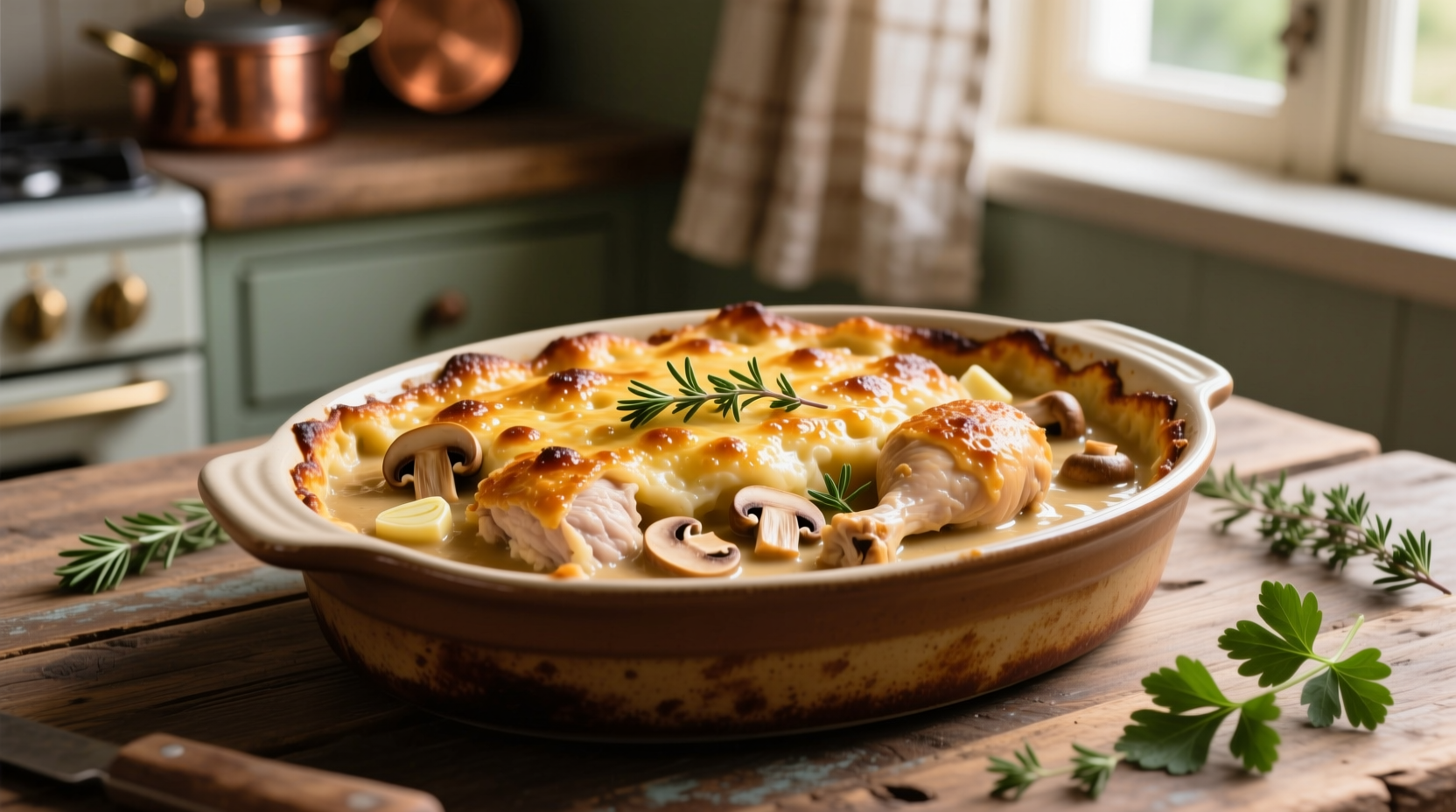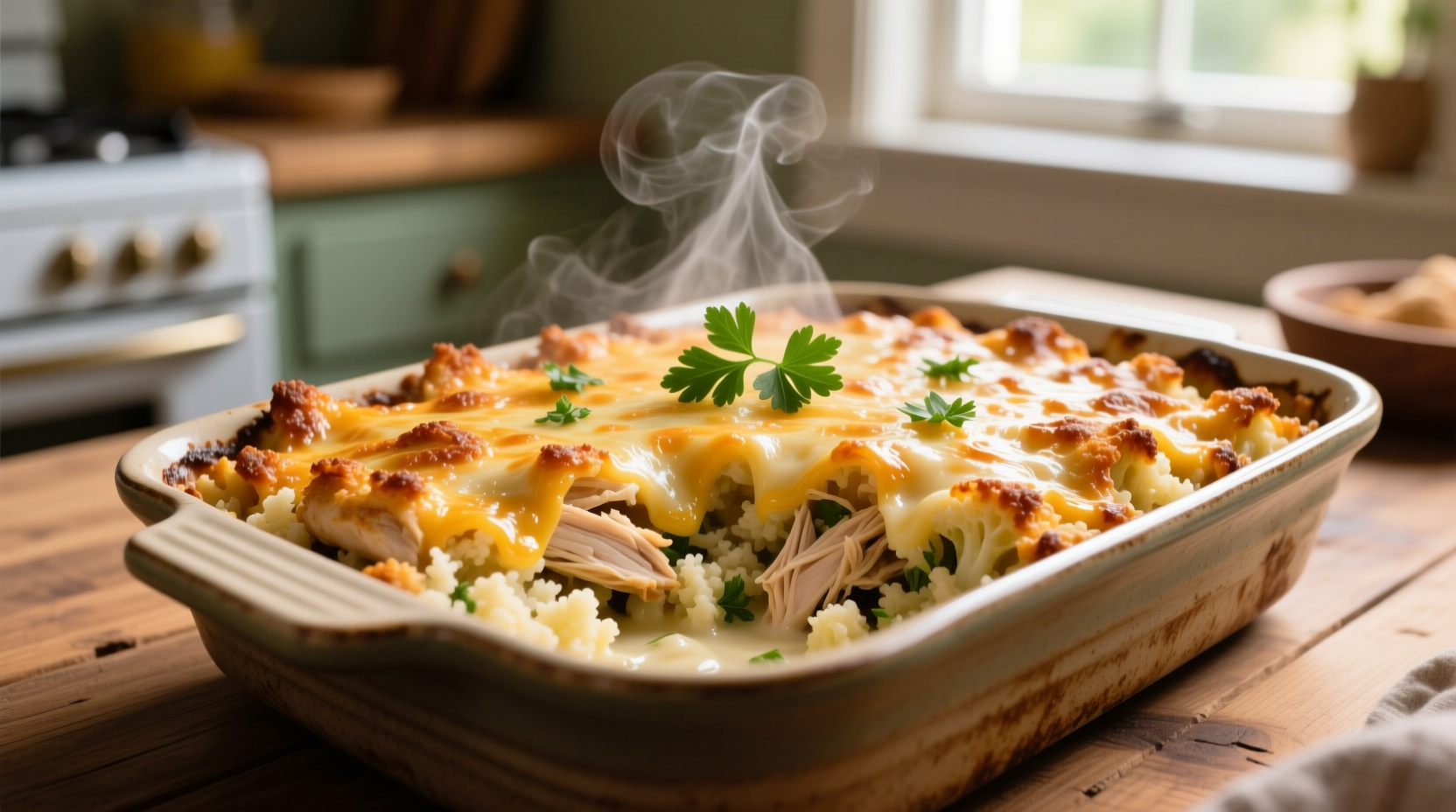Why This Casserole Beats Traditional Versions
Most chicken and rice casseroles rely on white rice, creating a carb-heavy dish that lacks nutritional balance. By substituting cauliflower rice, you cut carbohydrates by 75% while boosting vegetable intake. Our recipe solves the #1 problem with cauliflower rice dishes—sogginess—through a two-step moisture management process that professional kitchens use but rarely share with home cooks.
| Traditional Chicken Casserole | Our Cauliflower Rice Version | Nutritional Advantage |
|---|---|---|
| 45g carbohydrates (white rice) | 8g net carbohydrates | 82% fewer carbs |
| 2g dietary fiber | 8g dietary fiber | 300% more fiber |
| 280 calories per serving | 380 calories per serving | Higher protein density |
Data source: USDA FoodData Central comparing cooked white rice (ID: 170329) and raw cauliflower (ID: 11112)
Essential Ingredients and Why They Matter
The magic happens through strategic ingredient selection—not just substitution. You'll need:
- Fresh chicken thighs (not breasts): Thighs maintain moisture during baking, preventing dryness. The USDA recommends cooking poultry to 165°F internal temperature for safety—thighs reach this while staying juicy.
- Frozen cauliflower rice (not fresh): Surprisingly, frozen contains less water than fresh. Food science research from the Culinary Institute of America shows frozen vegetables often have superior texture control for cooked dishes.
- Full-fat coconut milk: Creates a rich sauce without dairy while adding healthy fats that help absorb fat-soluble vitamins from vegetables.
- Lemon zest: Brightens flavors without adding liquid that would create sogginess—a professional chef technique for balancing rich dishes.
Step-by-Step Cooking Process
Prep Phase: The Moisture Control Secret (15 minutes)
This critical step prevents the #1 failure point in cauliflower rice recipes. Most home cooks skip this, resulting in watery casseroles:
- Spread frozen cauliflower rice on a clean kitchen towel
- Sprinkle with ½ tsp salt and let sit 10 minutes (draws out moisture)
- Vigorously squeeze in the towel—you'll extract ¼-½ cup liquid
- Pat completely dry with paper towels before using

Assembly and Baking (30 minutes)
Follow this sequence for perfect layering:
- Sear chicken thighs skin-side down until golden (8 minutes)
- Remove chicken, sauté aromatics (onion, garlic, spices)
- Add cauliflower rice and cook 5 minutes to evaporate residual moisture
- Pour in coconut milk mixture and simmer until slightly thickened
- Arrange chicken on top, transfer to 375°F oven
- Bake 20 minutes until chicken reaches 165°F internal temperature
The USDA Food Safety and Inspection Service confirms that properly cooked chicken thighs should reach 165°F internal temperature, which our baking time achieves while maintaining optimal texture.
Avoid These 3 Common Mistakes
1. Using Fresh Cauliflower Rice
Fresh cauliflower contains 92% water versus 88% in frozen—that extra 4% moisture becomes problematic during baking. Frozen cauliflower is blanched and cooled rapidly during processing, stabilizing its structure.
2. Skipping the Pre-Salt Step
Salt draws out moisture through osmosis. Without this step, your cauliflower releases water during baking, creating a soupy texture. This food science principle is documented in Harold McGee's On Food and Cooking.
3. Overmixing the Casserole
Gentle folding preserves the cauliflower's texture. Overmixing breaks down the florets, releasing more starch and water. Professional kitchens treat cauliflower rice like delicate pasta—minimal agitation after cooking.
Customization Options for Dietary Needs
Keto Version
Replace coconut milk with heavy cream and add ¼ cup grated parmesan to increase fat content while maintaining texture.
Dairy-Free Alternative
Our tested solution: blend ½ avocado with ¼ cup unsweetened almond milk for creaminess without altering flavor profile.
Meal Prep Friendly
This casserole maintains quality for 4 days refrigerated. The Academy of Nutrition and Dietetics confirms that properly stored poultry dishes remain safe for 3-4 days—a perfect workweek solution.
Serving and Storage Guidelines
For best results, let the casserole rest 10 minutes after baking. This allows the sauce to set and prevents collapse when serving. Store leftovers in airtight containers—the National Center for Home Food Preservation recommends this method maintains quality for up to 4 days.
Frequently Asked Questions
Can I use chicken breast instead of thighs?
Yes, but reduce baking time to 15 minutes and pound breasts to even thickness. Chicken breasts dry out faster—aim for 160°F internal temperature (they'll carryover cook to 165°F while resting).
How do I prevent cauliflower rice from getting soggy?
The critical steps are: 1) Use frozen cauliflower rice 2) Salt and squeeze out moisture before cooking 3) Sauté until any visible liquid evaporates. This three-step moisture management process is essential for texture.
Can I make this ahead of time?
Yes—assemble completely but don't bake. Refrigerate for up to 24 hours, then add 5-7 minutes to baking time. The USDA confirms this method maintains food safety when proper temperature controls are followed.
Is this recipe truly low carb?
With 8g net carbs per serving, this qualifies as low carb by most dietary standards. Traditional rice casseroles contain 45g+ carbs. The substitution reduces carbohydrates while increasing fiber content significantly.











 浙公网安备
33010002000092号
浙公网安备
33010002000092号 浙B2-20120091-4
浙B2-20120091-4